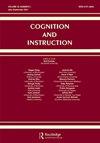The Durability and Invisibility of Practice Fields: Insights from Math Teachers Doing Math
IF 2.3
1区 心理学
Q2 PSYCHOLOGY, EDUCATIONAL
引用次数: 0
Abstract
Abstract In this paper, we revisit a long-running conversation about situated learning and the design of environments for disciplinary engagement. Throughout the 1970s and 1980s, scholars advanced an anthropological critique of the then-dominant acquisitionist paradigm of formal schooling with a situated view focused on membership in communities and participation in practices. The critique led to a practice turn in education and a consensus model for reform-oriented school classrooms as orchestrated practice fields where students engage in disciplinary practices within a structured environment. Questions remain, however, about the nature of the practices and communities that this model engenders. We join this conversation through an anthropological investigation of a self-organized group of teachers who gather outside of school hours to engage in collaborative mathematical activity. Participants have the flexibility to conduct their mathematical activity however they want; yet as we show, they tend to reproduce a practice field resembling a reform-oriented school mathematics classroom. This may seem unremarkable, even desirable for many reformers. However, assuming that teachers can or should only replicate practice fields when doing mathematics may be selling them short. Our findings suggest a durability and invisibility to practice fields that may be limiting the possibilities for the production of novel learning communities within schools.实践场的持久性和不可见性:数学教师做数学的见解
在本文中,我们重新审视了关于情境学习和学科参与环境设计的长期对话。在整个20世纪70年代和80年代,学者们对当时占主导地位的正规学校教育的获取主义范式进行了人类学批判,他们的观点侧重于社区成员和实践参与。这一批评导致了教育实践的转变,并形成了一种共识模式,即以改革为导向的学校课堂作为精心安排的实践领域,学生在一个结构化的环境中从事学科实践。然而,这个模型产生的实践和社区的性质仍然存在问题。我们通过对一个自发组织的教师小组的人类学调查加入了这一对话,这些教师小组在课外时间聚集在一起参与合作的数学活动。参与者可以灵活地进行他们想要的数学活动;然而,正如我们所展示的,他们倾向于重现一个类似于以改革为导向的学校数学课堂的实践领域。这似乎没什么了不起,甚至对许多改革者来说也是可取的。然而,假设教师在做数学时可以或应该只复制实践领域,可能会低估他们。我们的研究结果表明,实践领域的持久性和不可见性可能限制了学校内产生新型学习社区的可能性。
本文章由计算机程序翻译,如有差异,请以英文原文为准。
求助全文
约1分钟内获得全文
求助全文
来源期刊

Cognition and Instruction
Multiple-
CiteScore
7.90
自引率
12.10%
发文量
22
期刊介绍:
Among education journals, Cognition and Instruction"s distinctive niche is rigorous study of foundational issues concerning the mental, socio-cultural, and mediational processes and conditions of learning and intellectual competence. For these purposes, both “cognition” and “instruction” must be interpreted broadly. The journal preferentially attends to the “how” of learning and intellectual practices. A balance of well-reasoned theory and careful and reflective empirical technique is typical.
 求助内容:
求助内容: 应助结果提醒方式:
应助结果提醒方式:


